 Blue Grosbeaks, Painted Buntings and Indigo Buntings were the most common songsters in the park today as summer brought nearly 100 degree temperatures. Today I found male Blue Grosbeaks singing at three sites. The Twin Falls & Pedernales River Blue Grosbeak nest still has the female sitting on two eggs. The song of this species is similar to the Painted Bunting but hoarser. Rufous-crowned Sparrows continue to be heard along Wolf Mountain Trail and one was recorded on the bluff at Twin Falls this morning.
Blue Grosbeaks, Painted Buntings and Indigo Buntings were the most common songsters in the park today as summer brought nearly 100 degree temperatures. Today I found male Blue Grosbeaks singing at three sites. The Twin Falls & Pedernales River Blue Grosbeak nest still has the female sitting on two eggs. The song of this species is similar to the Painted Bunting but hoarser. Rufous-crowned Sparrows continue to be heard along Wolf Mountain Trail and one was recorded on the bluff at Twin Falls this morning.Walking into Tobacco Creek I passed the Acadian Flycatcher nest #1. It appears the single nestling fledged. I heard the male singing in the draw. At Tobacco Creek Seep I discovered a second active Acadian Flycatcher nest. This nest is located on the same pecan tree limb overhanging the seep that the Black-chinned Hummmingbird nest was on. The hummingbird nest was predated on by a squirrel over a month ago. I watched the female Acadian Flycatcher fly into a leafy area so after my survey I investigated and found the female on the nest. Acadian Flycatcher nests appear to be located on the lower canopy of mature trees, thus quite visible, although they are the same size as the abundant ball mosses.
 The seep at Tobacco Creek continues to bring fresh water dripping off old logs, (photo to the left). Today Red-eyed Vireo, Carolina Chickadees, the Acadian Flycatcher and Painted Buntings frequented this seep. The photo above is one of the easier climbs down to the Pedernales River at Tobacco Creek.
The seep at Tobacco Creek continues to bring fresh water dripping off old logs, (photo to the left). Today Red-eyed Vireo, Carolina Chickadees, the Acadian Flycatcher and Painted Buntings frequented this seep. The photo above is one of the easier climbs down to the Pedernales River at Tobacco Creek.
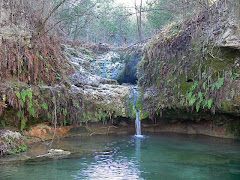
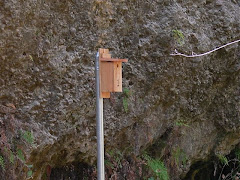
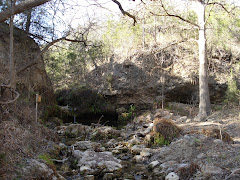
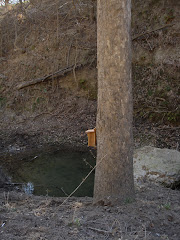
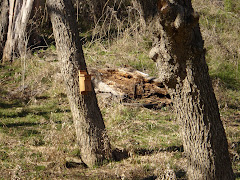




No comments:
Post a Comment